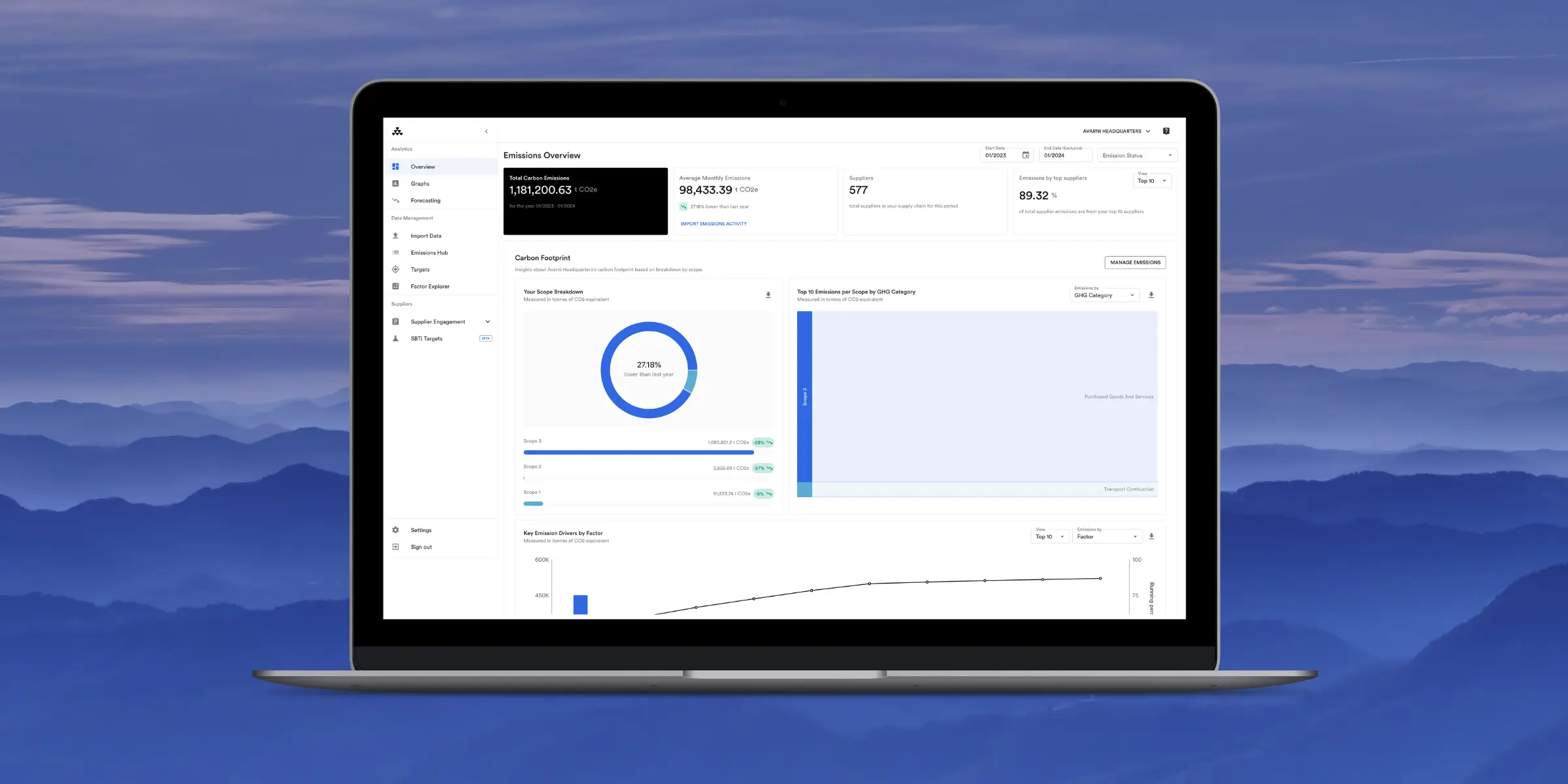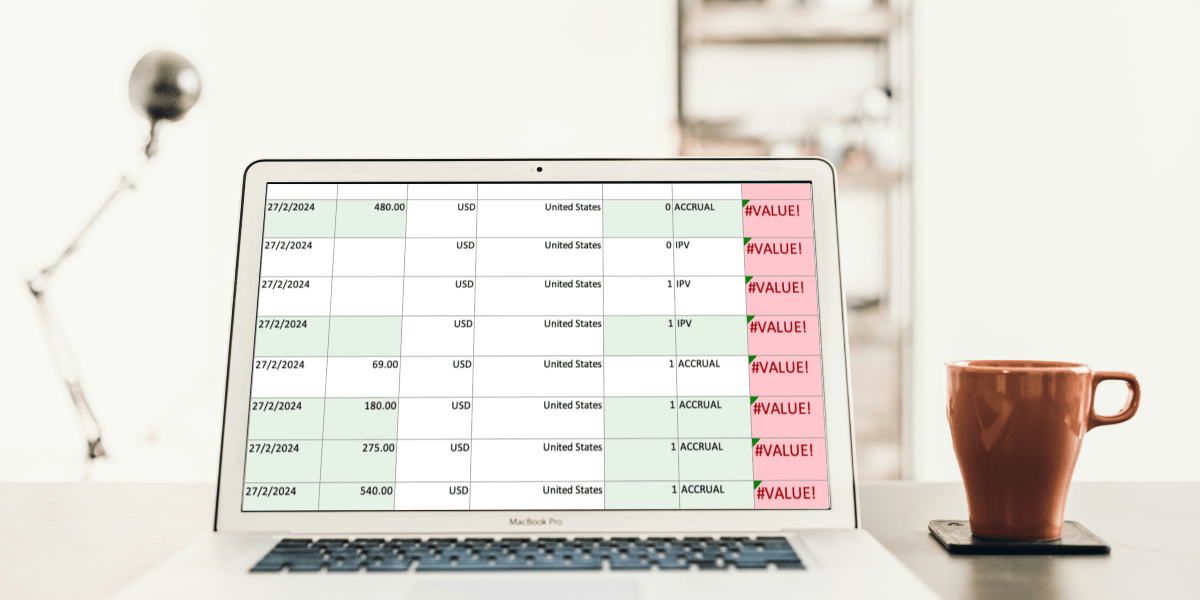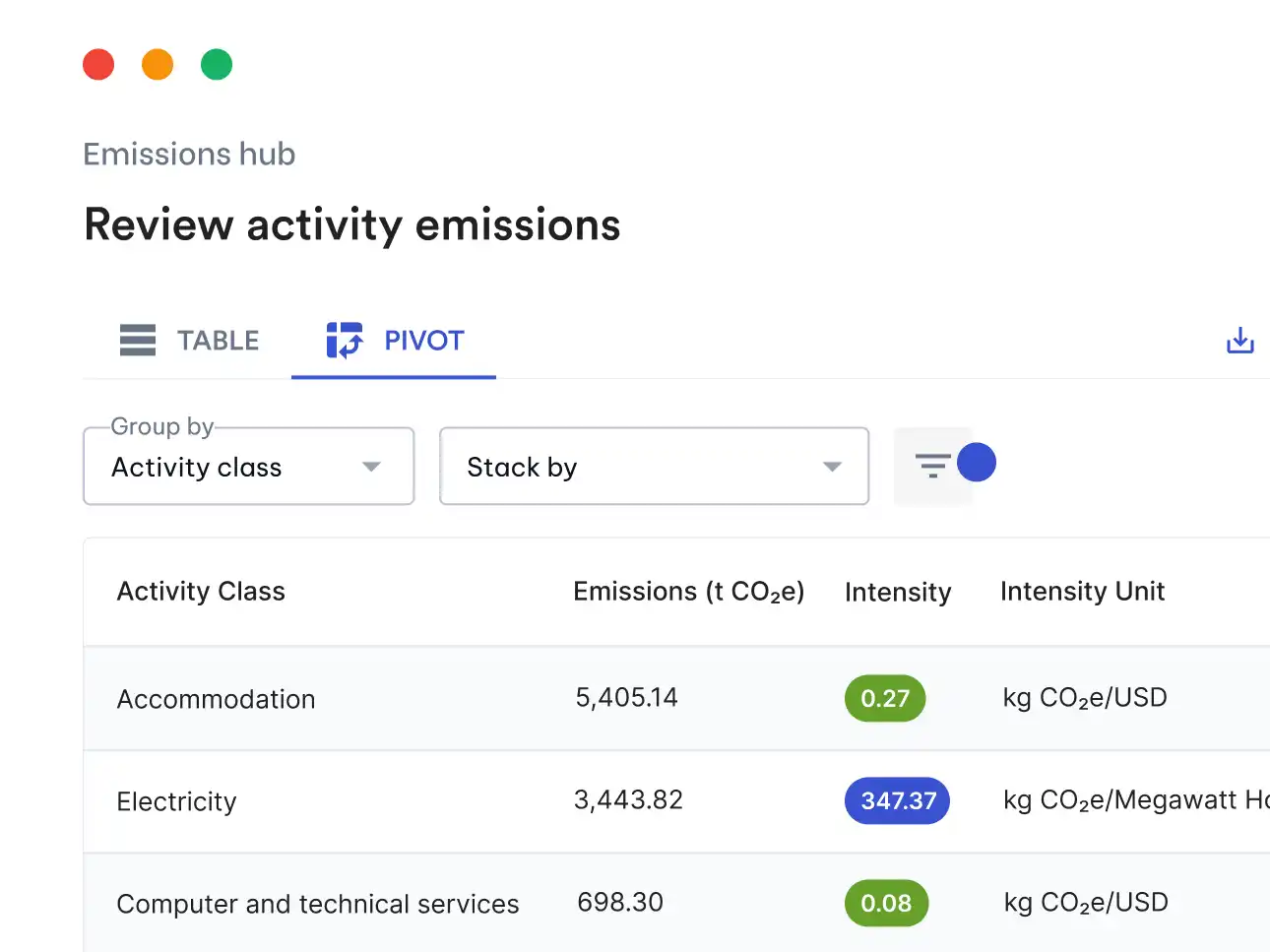As climate disclosure becomes standard business practice, corporations are under pressure to invest in carbon management solutions that do more than just count emissions. With new regulatory frameworks like ASRS and AASB S2 pushing climate data into the domain of financial reporting, accuracy, auditability, and decision-making support are now non-negotiables.
Choosing the right solution is about more than checking boxes for Scope 1, 2, and 3. It’s about making sure your platform scales with your data, enables credible reporting, and supports actual emissions reduction, not just measurement. If your organisation is preparing for external assurance, investor scrutiny, or mandatory transition planning, the right tool can make that work smoother and more defensible.
Here’s what to look for when evaluating a carbon management solution in 2025 and beyond.
GHG Protocol compliance as a core function
Start with the basics: your carbon management platform must be fully aligned with the Greenhouse Gas Protocol. That means support for detailed calculations across Scope 1 and 2, and full coverage of all 15 categories of Scope 3. The solution should allow for hybrid methodologies, like combining spend-based calculations with activity-based or supplier-specific data, while clearly indicating the level of accuracy and data source for each emission.
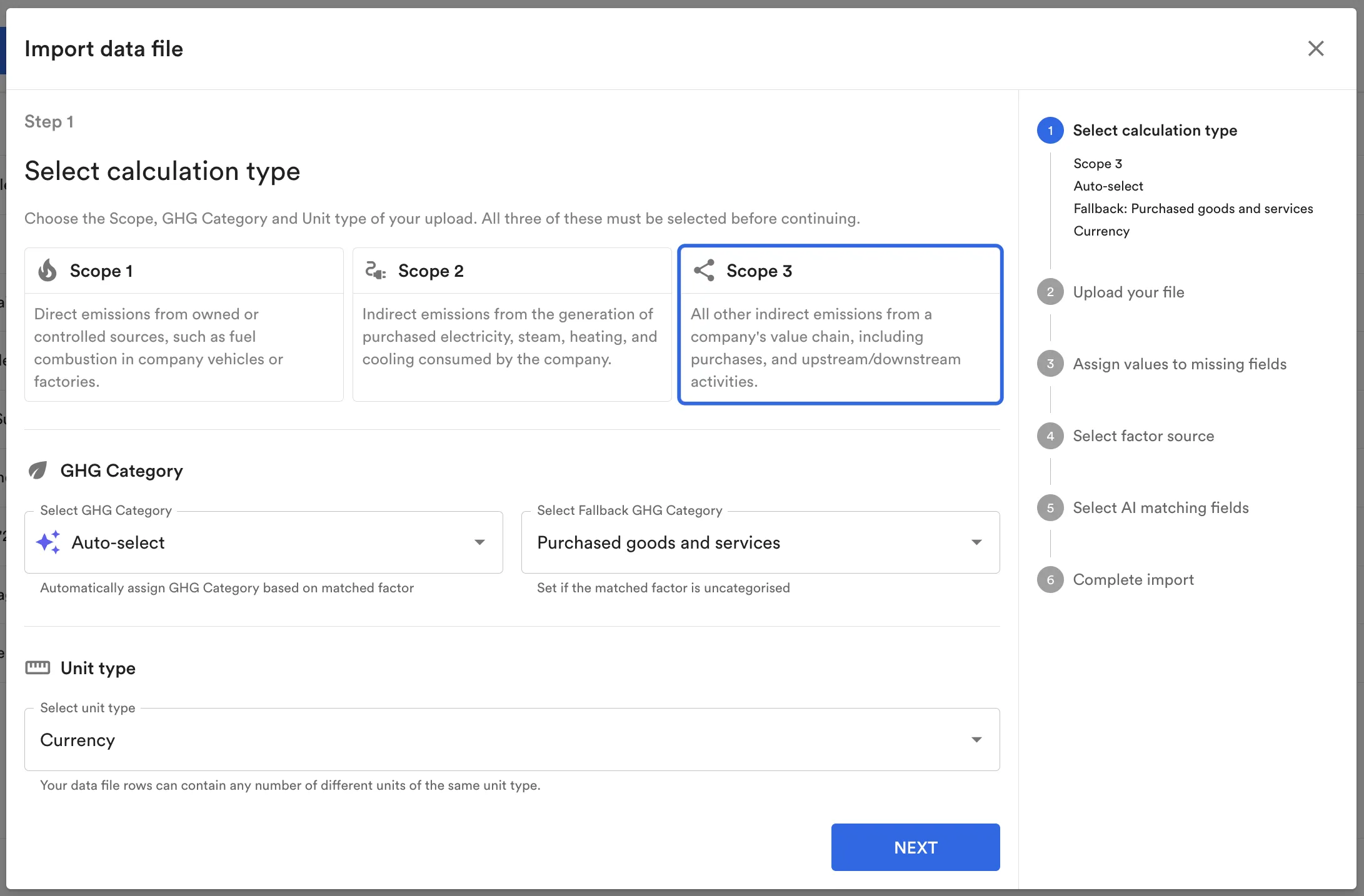
A GHG-compliant tool should also provide a transparent view into emission factor sources, update cycles, and calculation methodologies. Without that transparency, you’ll struggle to meet expectations under global reporting frameworks, or pass assurance.
Ready for ASRS and AASB S2 disclosure requirements
Climate disclosures are increasingly being held to the same standard as financial disclosures. Under ASRS and AASB S2, Australian companies need to report not only emissions, but also climate-related risks, opportunities, and the financial implications of both. This requires data that is audit-ready, traceable, and structured for disclosure.
Look for a solution that aligns with ISSB, TCFD, and CDP standards out of the box. The platform should maintain a full audit trail of emissions data — from the original source (like procurement or utility records) through to the final disclosures — making it easier to provide assurance or explain changes over time.
Scalable Scope 3 management
Managing Scope 3 emissions remains one of the most difficult challenges in carbon accounting. A good carbon management solution should automate as much of this as possible. That means automatically classifying procurement data, mapping it to appropriate emission factors, and identifying hotspots across categories, suppliers, or business units.
Even more critical is the ability to bring in primary supplier data, without making it a burden. Look for platforms that offer a built-in supplier engagement workflow, so you can gradually improve data quality while still covering your full value chain. The best tools will allow you to track data quality over time and report both estimated and actual emissions transparently.
Forecasting and decision support
Emissions reporting is only valuable if it leads to action. The solution you choose should help your team run scenario analyses, model the impact of changes, and forecast emissions under different operational or supplier decisions. Whether you’re evaluating a shift in logistics, a supplier switch, or a redesign of product inputs, your platform should give you a defensible view of the emissions consequences.
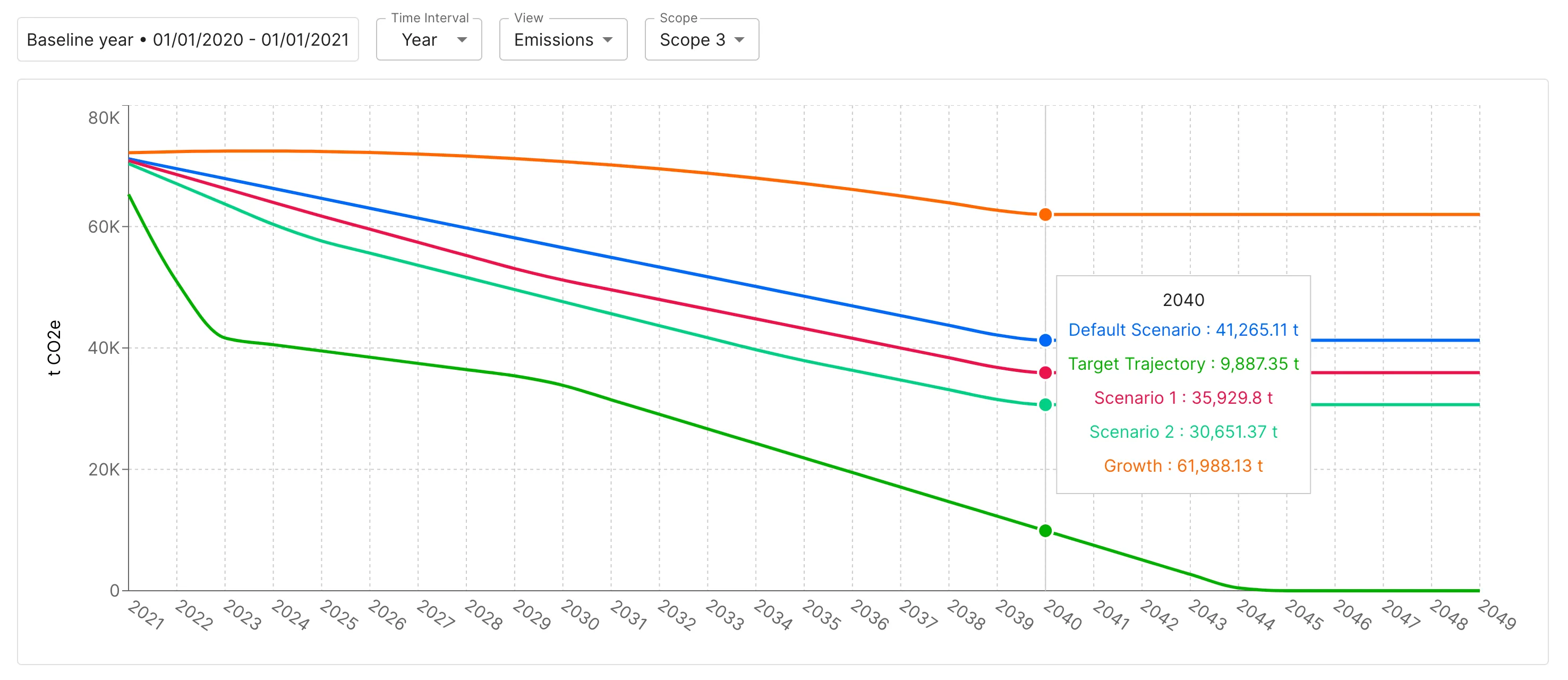
The ability to layer in internal reduction targets or climate strategies and assess progress is also key. You want a tool that not only reports where you are, but helps you decide where to go next—and how to get there.
Clear visuals and deep functionality
Don’t be fooled into thinking you need to choose between beautiful dashboards and deep data. The best carbon management solutions deliver both. A clean, intuitive interface should make it easy for teams across sustainability, finance, procurement, and risk to understand the numbers and drill into the details.
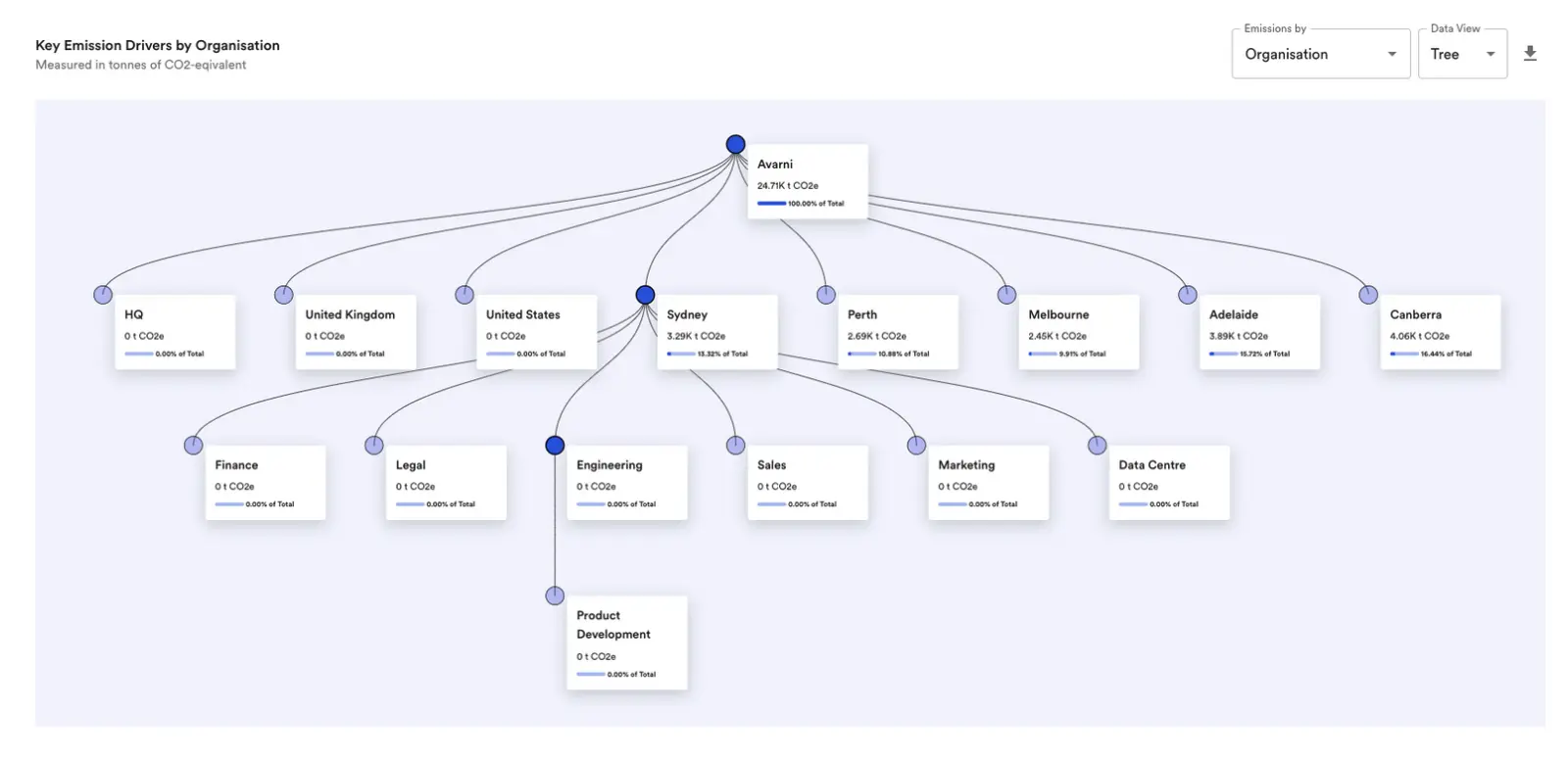
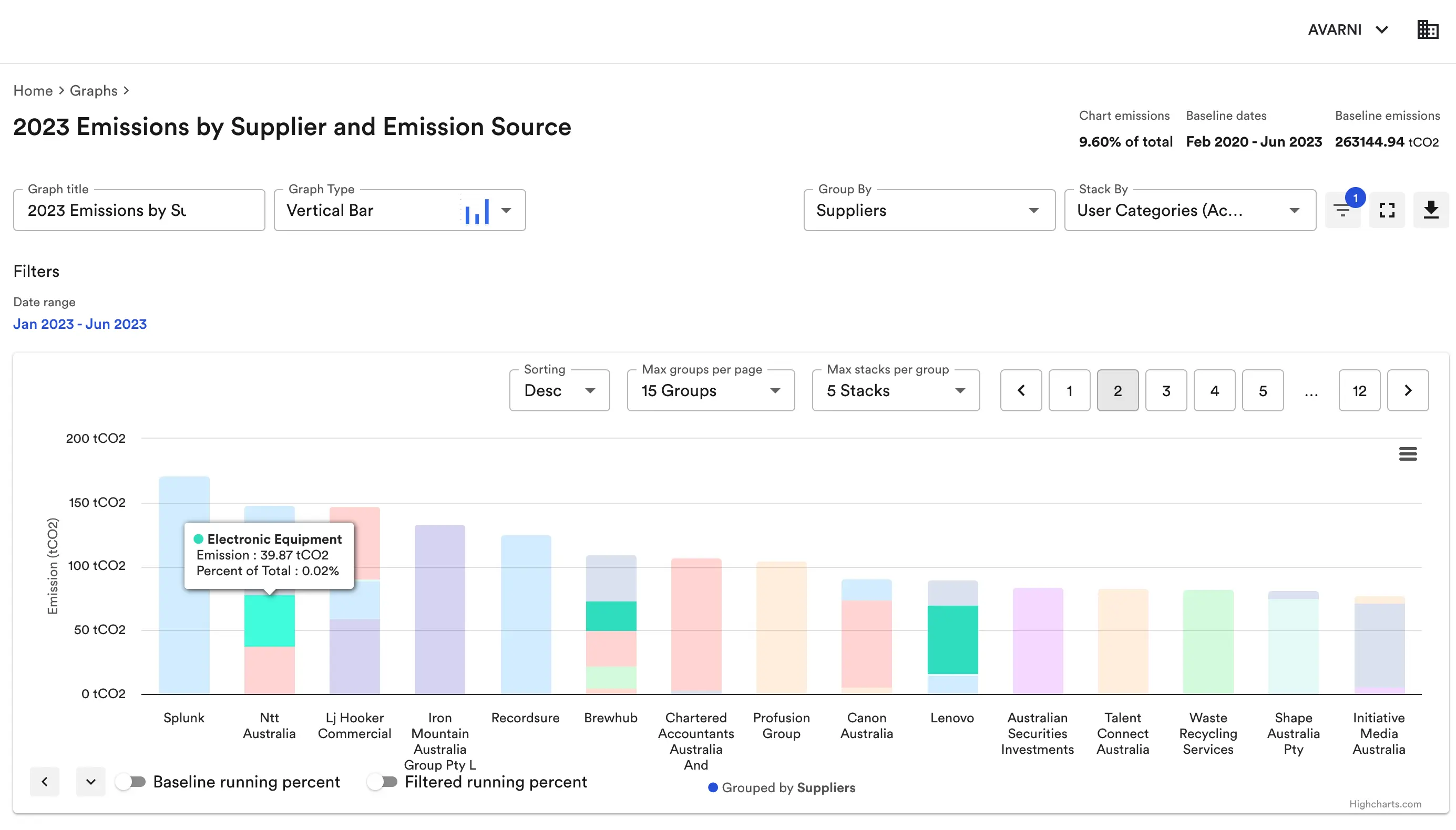
Make sure the tool allows you to explore emissions data at multiple levels: by supplier, product, business unit, or geography, and that each figure is traceable to its inputs. If you’re relying on cross-functional collaboration to meet climate goals, ease of use is essential.
Audit-ready governance
As climate data comes under more scrutiny, having clear governance and auditability becomes essential. Your platform should provide full data lineage, version control, role-based permissions, and the ability to export full calculation logs.
Every emissions figure should be supported by metadata explaining where it came from, how it was calculated, and when it was last updated. This is the level of rigor required under financial-grade reporting frameworks, and it’s increasingly expected by regulators, auditors, and stakeholders alike.
Seamless integration with enterprise systems
Emissions data is distributed across your organisation: procurement systems, finance tools, utility platforms, and logistics software. A carbon management solution should ingest that data automatically, either through pre-built integrations or via API, so that reporting doesn’t become a monthly scramble for spreadsheets.
Seamless data ingestion not only saves time but improves consistency and reliability. It also sets the stage for real-time or higher-frequency reporting as expectations evolve.
Future-proof and regulation-ready
Climate disclosure frameworks are changing rapidly. Your carbon management solution should be built to adapt. Look for platforms that are already aligned with ISSB, AASB S2, ASRS, and other global standards, and that actively update to meet new requirements, like taxonomy alignment, transition planning, and climate risk analysis.
The ability to adjust quickly as regulations shift will help you avoid expensive system overhauls later. You want a tool that evolves with the space — not one that will hold you back.
Summary
- GHG Protocol Alignment: Your platform must calculate Scopes 1, 2, and 3 accurately and transparently.
- Disclosure-Ready Data: Support for ASRS and AASB S2 requires audit trails, version control, and alignment with CDP, ISSB, and TCFD.
- Scope 3 at Scale: Automation, spend classification, and supplier data collection are essential to improve Scope 3 quality.
- Forecasting and Scenario Planning: Choose a solution that helps model emissions impact and supports action — not just reporting.
- User-Friendly and Flexible: Deep data should be easy to navigate for both technical and non-technical users.
- Audit Governance: Full traceability and permission control are now baseline requirements for corporate disclosure.
- Enterprise Integration: Automated data ingestion saves time and supports consistency.
- Built for What’s Next: The best tools keep pace with changing regulations and reporting frameworks.
Want to see a platform that does all of the above?
Book a demo with Avarni to see how it simplifies emissions reporting, improves Scope 3 visibility, and prepares your business for regulatory-grade climate disclosure.


